'Horrendous situation': America's teachers are suing the federal government over student loans
America has a trillion-dollar student debt problem, and one group of borrowers has had enough.
Teachers across America have gotten so frustrated with low pay and a broken federal loan forgiveness system — which supposedly forgives loans for people working in qualifying public service jobs after a decade of payments — that they’ve decided to sue the Department of Education (DOE).
The American Federation of Teachers (AFT), the second-largest teachers union in the U.S., alleges that the government's loan forgiveness program for public service workers does not function properly, and calls for a fix.
“The very agency that is supposedly the champion of our nation’s education system has failed to live up to its role in administering this Program,” asserted the lawsuit, which was filed in July.
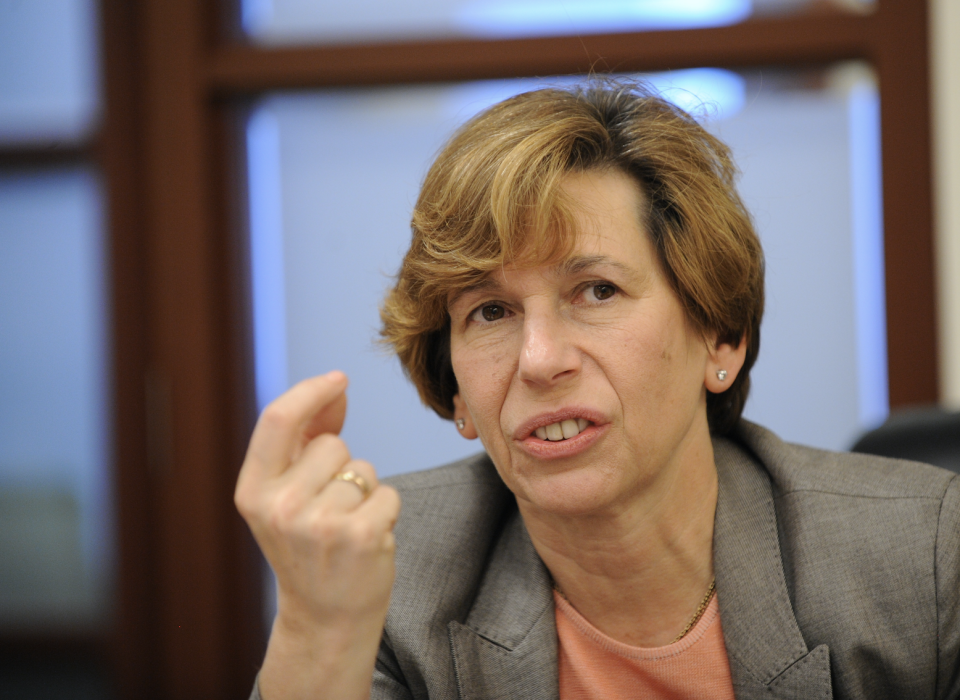
Teachers ‘embarrassed’ about their student debt
Over the past few years, student debt has been rising exponentially, hitting more than $1.5 trillion in loans outstanding. And teachers — who often have to take on post-graduate degrees to qualify for teaching positions — are feeling the heat.
They’re now “embarrassed” about their student loans, United Federation of Teachers (UTF) President Michael Mulgrew told Yahoo Finance. “Because the thing is, I went to school, I went to college, I wanted to become a teacher. I took loans. And now I’m paying $600, $700 a month right off the bat every month for my student loan… it’s a horrendous situation for them to be in.“
On top of that, “everybody talks about it,” added Mulgrew. “You hear all the politicians talk about it. But the idea that they passed the student loan forgiveness federal program, and in reality nobody gets to use it — that’s insane.”
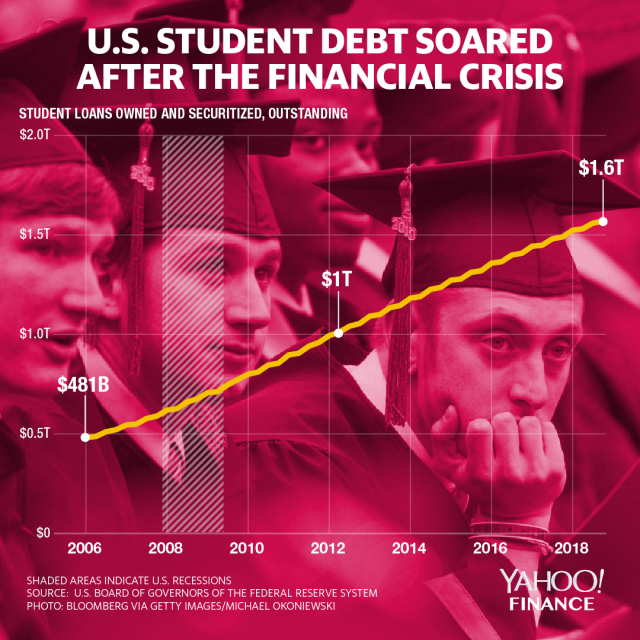
Low income, high debt
The road to teaching is a noble but expensive one.
A recent survey by social app Fishbowl — which looked at 10,284 responses from graduates — found that nearly 65% of teachers have student debt.
"Teachers have a lower median income and are taking on student debt at a higher rate than the three other industries involved in our survey,” Kyle McCarthy, head of growth at Fishbowl told Yahoo Finance.
“On top of that, over 96% of teachers are spending their own personal money to provide underprivileged students with the school supplies they need, leaving teachers with even less disposable income,” he added. “It’s a good example of the growing wealth inequality in our society today."
In the U.S., there were 3.8 million full- and part-time public school teachers between 2015 and 2016, based on the latest figures from the Department of Education.
Half were elementary school teachers, and the other half secondary school teachers. There were also 27% more teachers in 2015 than in 2000.
Around 55% of elementary school teachers and 59% of secondary school teachers held either a “post baccalaureate degree” — which is either a master’s degree, a doctor’s degree, or an education specialization.
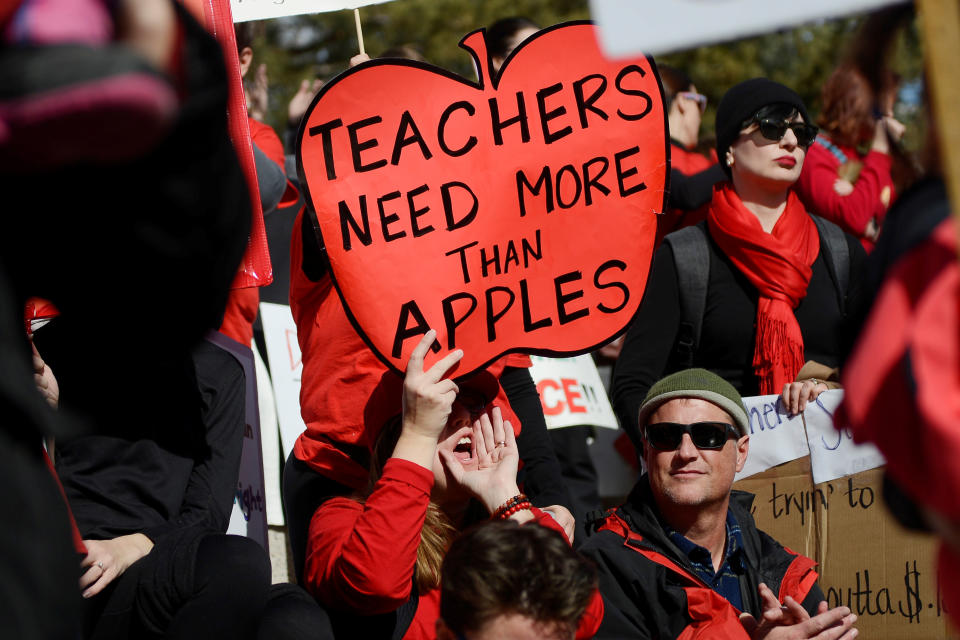
A master’s degree, in particular, is required to obtain a permanent teaching license in 36 states and D.C.
The median student debt taken on by a borrower for an undergraduate and master’s degree is $50,879, according to a 2014 study by the New American Education Policy Program.
And on the flip side, teachers also earn substantially less than people in other occupations who have a master’s degree. Data from the Bureau of Labor Statistics (BLS) shows that kindergarten and elementary school teachers earned $57,980 in 2018, middle school teachers earned $58,600, and high school teachers $60,320.
That stands in stark contrast to what one can make with a master’s if they were in the financial services industry. The median annual wage for the industry was $170,000, according to BLS.
“Education debt looms larger than it would otherwise because you don't end up making a lot of money and you don't have the prospect to make a lot of money,” Kenneth Gold, the founding dean of the College of Staten Island Department of Education told Yahoo Finance. “You don't have big salary increases… So a $30,000 debt for a graduate degree in education is a much weightier debt than a probably a $50,000 debt for law school.”
The broken promises of repaying teacher's loans
In 2007, then-President George W. Bush signed into law the public service loan forgiveness program (PLSF) to encourage people to go into public service. However, the law’s eligibility requirements are convoluted. The New York Times writer Kevin Carey recently called it a “spectacular failure,” noting that it had a rejection rate of 99.3%.
Once borrowers who were working full-time for a qualifying employer made 10 years of qualifying payments, the remaining balance of their direct loans would be forgiven. But qualifying for the program would prove tough for many.
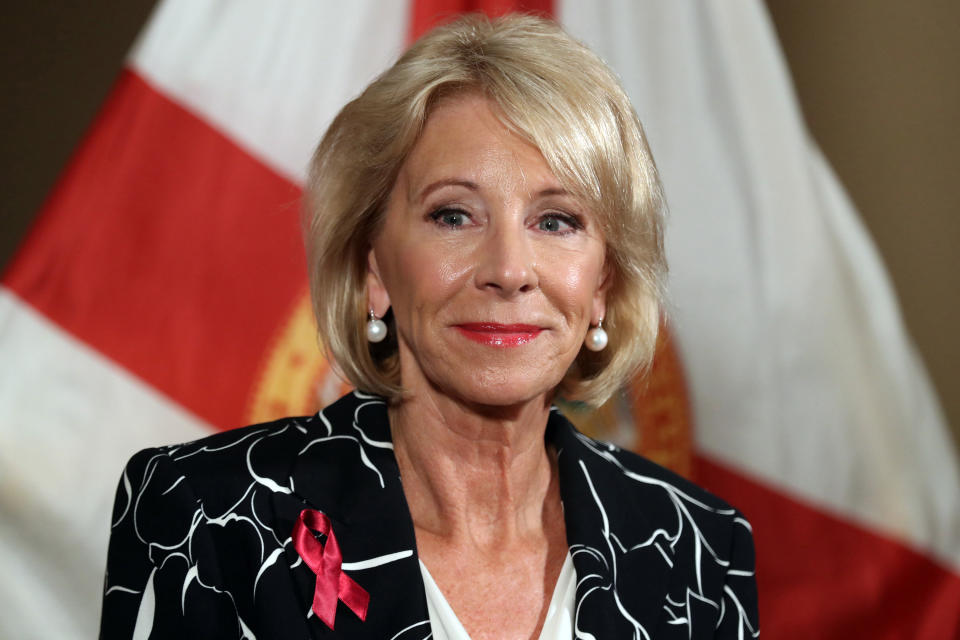
Of the 120 straight payments that had to be made, no payment could be more than 15 days late. If they were late, the borrower would become ineligible to participate in the program.
In response to bureaucratic inefficiency and rising financial pressure, teacher unions such as the AFT and the UTF are trying to pressure the federal government to make good on the promise they made nearly a decade ago. The lawsuit against the Department of Education is just the latest in a series of legal actions they’ve taken.
In 2018, the AFT filed a lawsuit against the DOE alleging “gross mismanagement” of the loan forgiveness program. The group has also filed a proposed class-action lawsuit against student loan servicer Navient. That suit claims that Navient steered those in public service like teaching away from specific debt relief programs to boost its profits. Navient has denied the allegations.
The Department of Education Press Secretary Liz Hill told Yahoo Finance in a statement that it cannot comment on ongoing litigation, but it added: “[T]he Department expects few people to be immediately eligible for a loan discharge under the Public Service Loan Forgiveness (PSLF) Program due, in large part, to complexities of the program Congress created more than a decade ago.”
It also noted several changes it has made to improve communication and transparency.
Giving up is not an option
Dissatisfaction among teachers, in the meantime, is rising and more teachers are leaving the field than staying in. According to the Learning Policy Institute, new teachers leave at rates of somewhere between 19% and 30% over their first five years of teaching. Census Bureau data reveal that teachers are leaving the profession in droves, opting for careers in health care, child care, and family assistance services.
Those who haven’t made the jump yet are going on strike to register their frustration. Work stoppages have occurred in Arizona, Colorado, California, North Carolina, Oklahoma, and West Virginia.
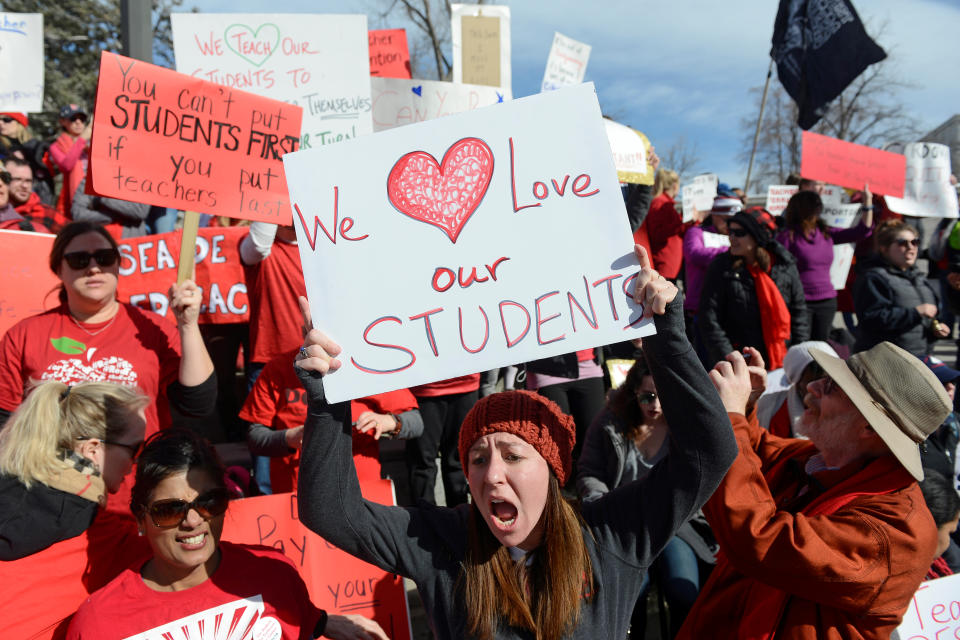
The most significant one happened in Arizona, where striking teachers successfully pulled off a 20% pay increase. About 485,200 workers across the U.S. participated in the teacher work stoppages in 2018, which was the most since 1986.
A new PDK International survey revealed that public opinion was on their side.The study showed that 74% of parents of schoolchildren said they would support teachers who went on strike for higher pay.
‘I’m in it for the kids’
One of the plaintiffs in AFT’s lawsuit against the DOE told Yahoo Finance that she was at a breaking point.
"One of my paychecks is rent, and then the next one, a third of it goes towards my student loan. And then I have all my other bills. I don't have any other debt,” New York City Teacher Kelly Finlaw told Yahoo Finance. “I haven't accrued credit card debt. I'm not living extravagantly. I'm just trying to make all things in my life match up at the end of the month."
Finlaw, who has been teaching for 14 years, added: "I can't afford to buy my own place right now … I live already in the cheapest neighborhood in Manhattan. I want to stay there. I love Washington Heights, but I can't even afford a place in Washington Heights … that extra $600 a month is crippling."

The middle school teacher graduated with $120,000 in student loan debt. Entering year 14 of her teaching career, she still has $88,000 outstanding.
But despite her financial woes, leaving the profession was not an option for her.
"I'm in teaching for the long haul and did not get into it for that program,” Finlaw added. “It would be nice if someone came through on that promise specifically for a group of people aren't making adequate money, but I'm in it for the kids."
—
Reggie Wade is a writer for Yahoo Finance. Follow him on Twitter at @ReggieWade.
Aarthi is a writer for Yahoo Finance. Follow her on Twitter @aarthiswami.
Read more:
U.S. teachers increasingly struggle to find affordable housing: Study
Presidential candidate Pete Buttigieg: ‘I have six-figure student debt’
Bernie Sanders unveils sweeping student debt cancellation plan
Read the latest financial and business news from Yahoo Finance
Follow Yahoo Finance on Twitter, Facebook, Instagram, Flipboard, SmartNews, LinkedIn, YouTube, and reddit.

 Yahoo Finance
Yahoo Finance 